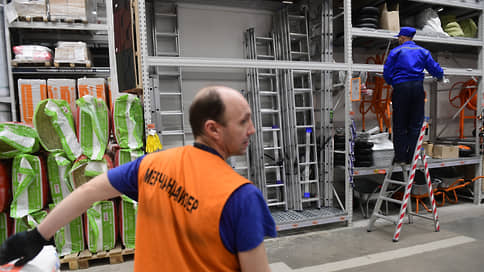In the first half of the year, the volume of import financing by factoring companies reached 31.5 billion rubles.
[ad_1]

In the first half of the year, the volume of import financing by factoring companies reached RUB 31.5 billion, doubling the result of the first half of the record year 2021. The segment began to actively develop due to the possibility to conduct transactions in currencies other than the ruble. In the second half of the year, in the absence of economic shocks and against the backdrop of a weakening ruble, the segment will continue to grow. However, in general, the factoring market may show a slowdown in growth.
According to the Association of Factoring Companies (AFC), in the first half of 2023, the volume of import financing by factoring companies reached RUB 31.5 billion. This is almost six times more than in the first half of 2022 and twice as much as in the first half of the industry-record year 2021. Market participants attribute the segment’s record performance to expanded opportunities. Since December 15, 2022, after the amendments to the law “On Currency Regulation and Control” came into force, factoring companies have been able to expand the product range of international factoring and have been relieved of barriers in the form of conversion in import factoring transactions. In fact, it became possible for importers to attract financing for purchases in currencies other than the ruble, including in the currencies of friendly countries (see Kommersant dated November 24, 2022).
Factoring – this is operational short-term financing of companies against the assignment of their receivables (future payments by a third party for the supply of goods). According to AFC, in the first six months of 2023, the factoring portfolio amounted to a record RUB 1.62 trillion. The market showed almost two-fold growth against the backdrop of growing business needs in the rapid replenishment of working capital.
Recently, the structure of international factoring has changed significantly. “In 2021, the bulk of factoring financing came from exports, and mainly to the EU. After February 2022, there was a sharp decrease in the share of export factoring due to the sanctions policy and difficulties in receiving payments from foreign buyers,” notes Igor Lysenko, CEO of SberFactoring. At the same time, according to him, the demand for import factoring has grown. “It took Russian importers about six months to form new supply chains, reorient their business and search for partners from friendly countries,” explains Mr. Lysenko.
The main demand was provided by products of FMCG (consumer goods), DIY (goods for repair and self-construction), pharmaceutical industry and electronics. Financing of import contracts with the main trading partners in the CIS countries, China, India takes place in national currencies (roubles, yuan, rupees), SberFactoring notes.
And in the second half of the year, the growth of import factoring will continue, AFK is sure. “In terms of financing import operations, there is simply no ceiling. Importers do not have alternative sources of financing purchases, especially on a prepaid basis,” says Dmitry Shevchenko, executive director of the industry association.
At the same time, forecasts for the market have improved markedly – if earlier at the end of the year AFK expected the portfolio to grow to 50 billion rubles, now the volume of financing can reach 70 billion rubles. “Currently, we are seeing growing consumer demand, including against the backdrop of a noticeable depreciation of the ruble. We can expect the positive dynamics in the segment of import financing to continue due to rising prices and an increase in the average size of the supply,” said Mikhail Doronkin, managing director of the NKR agency. According to AFK, the average amount of delivery in the first half of the year amounted to 497 thousand rubles, exceeding last year’s figure by 26%.
At the same time, the sentiments regarding the growth rates of the entire market in the second half of the year are restrained. “Market participants expect a gradual reduction in state programs to stimulate the economy due to the exhaustion of limits. In addition, the process of replacing foreign financing with Russian financing, which began in 2022, is now being completed, which will also affect the growth rate of the factoring market,” says Viktor Vernov, CEO of the ROWI fintech platform. According to him, in the second half of the year the market growth rates will be lower than in the first half of the year. Although at the end of the year the growth could reach 25-30%, Mr. Vernov believes. “Nominal growth of 10-15% due to inflation and devaluation of the ruble is also possible,” said Igor Vnukov, general director of VTB Factoring, cautiously.
[ad_2]
Source link





